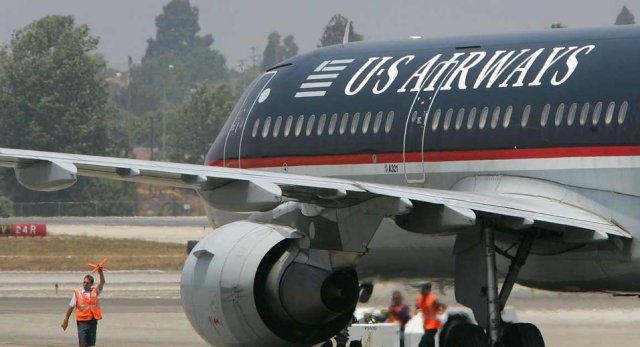The FAA is still investigating the incident involving a drone and a US Airways jet over Florida in spring. But the newly released record offers a reminder that not everyone agrees on what is meant by the word “drone,” a term that can encompass anything from a toy quadcopter to a military weapon — complicating the debate about whether, and how, federal authorities should regulate their use in the civilian skies.
The March 22 incident near Tallahassee, Florida., came to light in May when Jim Williams, head of the FAA’s Unmanned Aircraft Systems office, presented it as a cautionary tale during a speech at a drone business expo in San Francisco. He used that incident, and anecdotes about wayward drones injuring people on the ground, as reasons for the need for his agency to write regulations on standards for the unmanned craft.
Though drones can be small, the consequences of ingesting even something the size of a goose into an aircraft engine can be disastrous, especially during takeoff or landing. “Imagine a metal and plastic object, especially with [a] big lithium battery, going into a high-speed engine. The results could be catastrophic,” Williams said in his address, which The Associated Press quickly picked up on. Soon, the incident was leading CNN’s website for hours.
The episode was among the first well-publicized accounts of a drone almost colliding with a passenger airplane.
But according to the FAA’s preliminary near-midair collision report, which POLITICO obtained under the Freedom of Information Act, the offending object may not have been a drone at all, but rather a remote-control hobbyist aircraft.
The pilot reported that as he was on approach to land in Tallahassee, around 2,300 feet above the ground, he almost struck a “remote control aircraft” … a “small model F-4 aircraft that was camouflaged.” The report described it as a “model aircraft.”
Such models aren’t necessarily puny toys — for a craft able to fly that high, the wingspan could be as much as 3 to 6 feet. But they’re also not anything new.
The report also notes that the facility that reported interactions with the pilot didn’t classify the incident as a “near miss.”
At the time of the news reports, drones were grabbing headlines because people were flouting the FAA’s rules against their use, and stories proliferated questioning whether the agency had lost the battle over policing them. Critics questioned whether the FAA should really be in the business of regulating them at all, said Greg Cirillo, a partner at Wiley Rein LLP who specializes in drone issues and represents a wide range of clients with drone interests.
“This was in that period of time when people were still a bit outraged thinking that the FAA was stepping in to regulate what appeared to be a consumer device — you know, something seen almost as recreational,” Cirillo said. “And this was evidence of why they were doing it, and perhaps quieted some of the criticism.”
For the FAA, the difference in the risks posed by a model aircraft versus a “drone” isn’t that large. Either way, whatever the pilot saw would have been operating far beyond what the rules allow — much too high and much too close to a plane.
“I think [Williams] was just pointing out that when a remotely piloted aircraft is operating around an airport, it’s dangerous,” an FAA official said Tuesday.
Melanie Hinton, a spokeswoman for the Association for Unmanned Vehicle Systems International, said her group doubted from the start that the aircraft in the Florida incident was “one of ours,” in part because drones rarely operate at the height the pilot reported. Still, she said she thinks Williams “was trying to show an example of what can go wrong.”
Hinton said her group is using the incident “as a cautionary tale that you need to know before you fly.”
“It’s a perfect example of why there needs to be FAA rules and regulations and why we’ve been constantly pushing the FAA to come out with the small [drones] rule ASAP,” Hinton said. “Because there are people who are flying who don’t know what they’re doing or what the parameters are.”
For the hobbyist community, though, the debate lives on. After the initial report, some armchair critics suggested the pilot may have seen a real F-4 Phantom military jet, since some are still flying from nearby Tyndall Air Force Base — all are even outfitted to fly autonomously, as drones. But according to the report, whatever the pilot saw did not show up on radar, suggesting it was small.
Rich Hanson, a lobbyist for the Academy of Model Aeronautics, said his group did an informal investigation among the hobbyist community, and concluded that the ground conditions were such that it seemed improbable anyone could have been flying a model craft that high from somewhere in the vicinity.
“When you plot the location … there’s virtually nowhere that you could fly a model aircraft within visual line of sight,” Hanson said. “The way it was reported is very improbable that it was exactly what [the pilot] said it was.“
“We did sort of an internal investigation, fact-finding, to see if it was even feasible. And we basically ruled out an AMA member flying under AMA rules,” Hanson added. He also expressed skepticism that someone could have been piloting a model aircraft that high without some kind of autonomous guidance system in place.
Source: Politico

